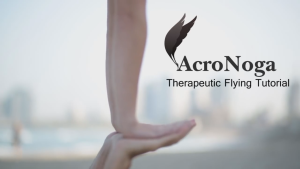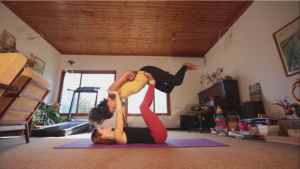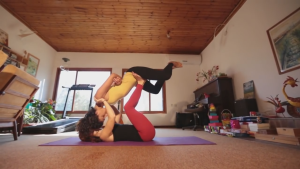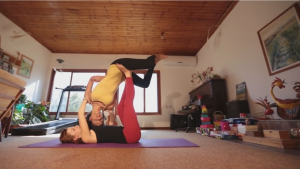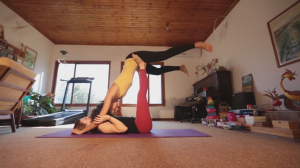Hey Everyone! You know that there have been quite a few posts on Acroyoga this month. With it being Valentines (and Deadpool for those of you who caught my Saturday email) month we felt it would be great to showcase a different type of hand balancing with a partner. In today’s post, Noga is going to go over a more therapeutic side of acroyoga involving thai massage!
The first position has the base posting on the hips and shoulders of the flyer. They then bend their knees independently or together to open up the flyer’s hips. The flyer should stay relaxed the entire time.
Up next are flyer circles. The base will take the flyer into forward and back circular pattern to open up the shoulder and hips with increasing leverage.
In the next position, Noga runs her flyer through a spinal twist to gain an inverted thoracic stretch.
Another stretch is to have the flyer elongate their spine while the base lengthens their position from the ground,
Noga goes through many more positions in the video that you can catch below!
One last thing! Flexibility and core stabilization is key for both the flyer and the base. So don’t forget that Logan and I have a special February deal for the advanced bridging course. Increase your core strength and mobility by going here!
Stay Inverted!
-Coach Jon

